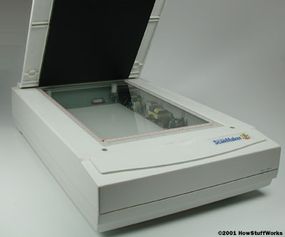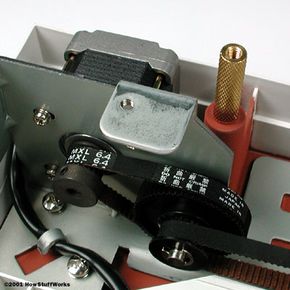Resolution and Interpolation
Scanners vary in resolution and sharpness. Most flatbed scanners have a true hardware resolution of at least 300x300 dots per inch (dpi). The scanner's dpi is determined by the number of sensors in a single row (x-direction sampling rate) of the CCD or CIS array by the precision of the stepper motor (y-direction sampling rate).
For example, if the resolution is 300x300 dpi and the scanner is capable of scanning a letter-sized document, then the CCD has 2,550 sensors arranged in each horizontal row. A single-pass scanner would have three of these rows for a total of 7,650 sensors. The stepper motor in our example is able to move in increments equal to 1/300ths of an inch. Likewise, a scanner with a resolution of 600x300 has a CCD array with 5,100 sensors in each horizontal row.
Advertisement

Sharpness depends mainly on the quality of the optics used to make the lens and the brightness of the light source. A bright xenon lamp and high-quality lens will create a much clearer, and therefore sharper, image than a standard fluorescent lamp and basic lens.
Of course, many scanners proclaim resolutions of 4,800x4,800 or even 9,600x9,600. To achieve a hardware resolution with a x-direction sampling rate of 9,600 would require a CCD array of 81,600 sensors. If you look at the specifications, these high resolutions are usually labeled software-enhanced, interpolated resolution or something similar. What does that mean?
Interpolation is a process that the scanning software uses to increase the perceived resolution of an image. It does this by creating extra pixels in between the ones actually scanned by the CCD array. These extra pixels are an average of the adjacent pixels. For example, if the hardware resolution is 300x300 and the interpolated resolution is 600x300, then the software is adding a pixel between every one scanned by a CCD sensor in each row.
Another term used when talking about scanners is bit depth, also called color depth. This simply refers to the number of colors that the scanner is capable of reproducing. Each pixel requires 24 bits to create standard true color and virtually all scanners on the market support this. Many of them offer bit depths of 30 or 36 bits. They still only output in 24-bit color, but perform internal processing to select the best possible choice out of the colors available in the increased palette. There are many opinions about whether there is a noticeable difference in quality between 24-, 30- and 36-bit scanners.
